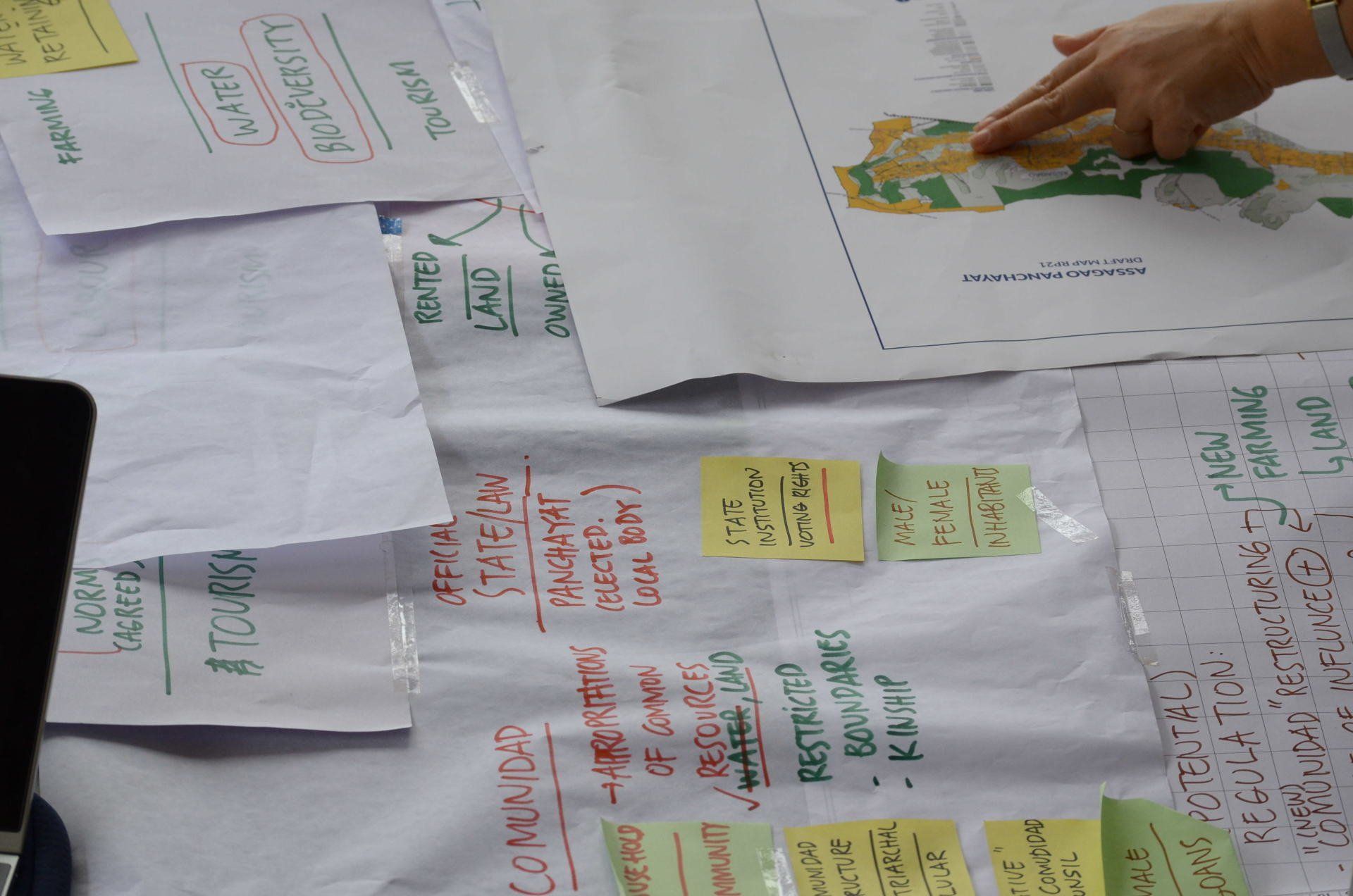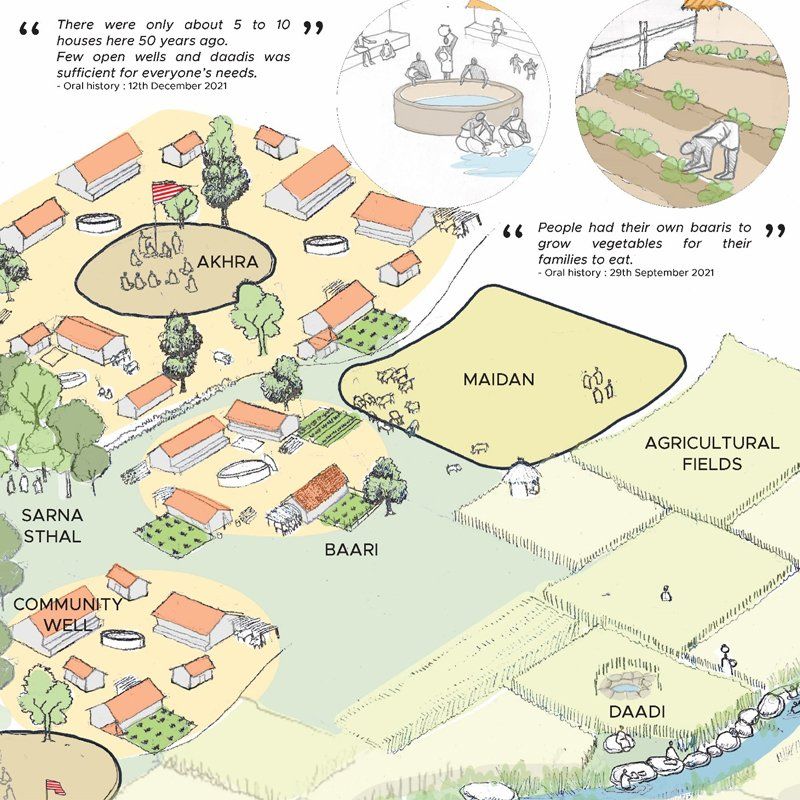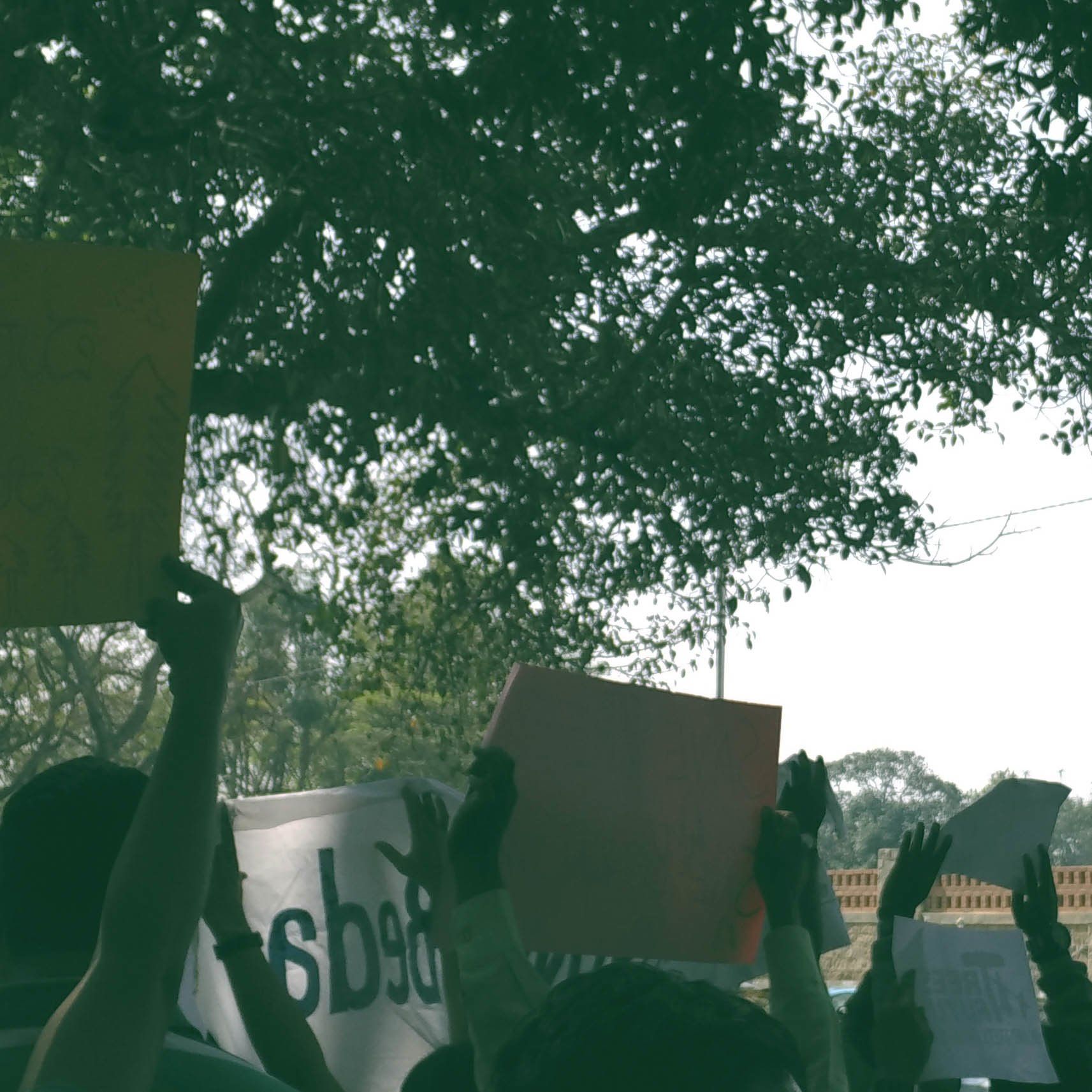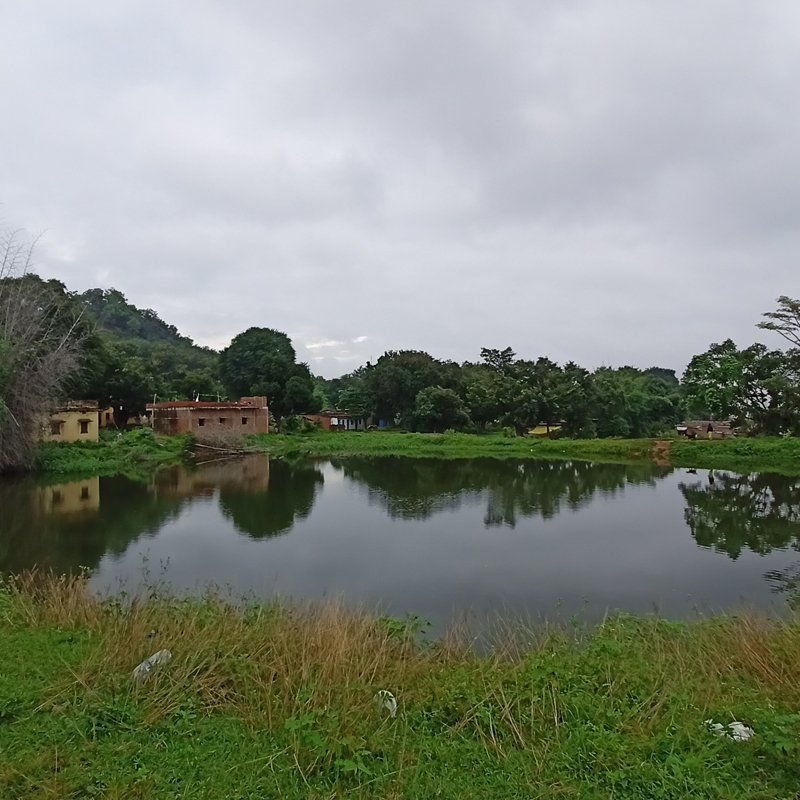It’s time to integrate data within municipalities
Center for Study of Science, Technology and Policy • Jul 04, 2019
Excerpts of an interview with Dr Anjali Karol Mohan

There is a lot of excitement around urban data and its merits are visible; yet, there is a gap between what is being discussed as potential and, what is being practised, says Dr Anjali Karol Mohan, an expert in urban e-governance. In over two and a half decades of practise and research, Dr Mohan has engaged with various urban planning and urban management exercises, evolved planning tools, and evaluated plans to provide inputs to policies and effective planning exercises. Currently, Dr Mohan is curating a two part seminar series (at the EAFIT University in Medellin, Colombia and NLSUI, Bangalore, India) that aims to address planning challenges faced by cities in the global south. Dr Mohan is a visiting Faculty at the National Law School University of India, Bangalore, International Institute of Information Technology Bangalore, and Takshashila Institution.
1. Recent governance dialogues revolve around data driven governance and its benefits. What in your opinion are the main challenges in implementing data-driven governance in the urban or rural space?
In my opinion, there are two challenges; one is the data itself and second, the people who will be using that data.
The first challenge lies in the lens through which data is viewed by different scales of governments and, by extension, the manner in which the data will get utilised. Therefore, although large datasets are being produced and collated by various governments, departments, and hierarchies, the scale, granularity, and periodicity of that data is from a particular lens. This might make it not so useful for other stakeholders. For instance data produced by State departments, for instance, to monitor local governments, may not be required by municipalities and panchayats whose roles and responsibilities are different. The second challenge is, who are the people using this data. There is a gap in capacity in terms of using data in a consistent and lucid manner so that it enables decision-making.
While the first challenge might be resolved if we unpack and understand the requirements of different lenses, but the second is a much more daunting challenge. This is where one needs to get functionaries and managers in various arms of the government into the habit of looking at data to inform their decisions. This not only requires building their capacity, but also increasing their will power for the same.
2. Is there a greater possibility of data usage by different stakeholders if data culture is institutionalised to some extent by target-oriented reforms?
Data generation, capture, analytics (as we understand it today in the context of the technology revolution), and its utilisation are not systemically embedded in governance structures and processes. There is a lot of excitement around data and perhaps people are beginning to see the merits of it. But there is still a gap between what is being discussed as potential and what is being practised. There are arguments that technology-driven data culture demands a generational change, i.e. next generation of city managers are more likely to be tech savvy and hence, better equipped to appreciate the relevance of technology in generating and collating data, converting that data into information, and eventually to knowledge. But I think that the new generation will only be able to do it if they are capacitated in a manner where data-driven decision making is the only choice. This requires not just conventional approaches through training programmes, but also a change in work culture, habits, and practices.
Having said that, I have come across several municipalities where data entry operators, typically from a younger generation have begun to comprehend the efficiency that a computer brings in, and are taking to technology even if it requires them to leverage their own personal resources.
From your experience, how do cities perceive capacity building efforts, especially efforts that emphasise the creation of new positions in municipalities, such as city data officers?
Historically, within the states, skill sets that can engage with technology and tech-enabled data are lacking. Attempts have been made to implement municipal reforms in various states — Karnataka has been a front runner in this. Similarly, there is a digital presence in Panchayats too. Commensurate with these reforms, is the hiring of data-entry operators/programmers and setting up of data cells. This is an ongoing effort. Notably, in several places, staff associated with the data cells are employed on a contract basis (although I am given to understand that recruitment and cadre rules are being modified to embed these skills within the state). While it may serve the purpose of initiating technology driven reforms, in the long run, my experience (and research) shows that the data cells do not get integrated within the municipalities. In effect, these emerge as parallel systems. It is about time that measures are initiated to ensure integration of data and data-related functioning within the municipality. This has far reaching implications on accountability mechanisms, which tend to get compromised in the presence of parallel systems.
3. Do you think that the Smart Cities Mission and other technology-focussed initiatives are able to bring convergence between the State’s perspective of why they need data and the municipality’s perspective of how efficiently they can use the data?
That the Smart City Mission has foregrounded the need for data (incl. data-cells, observatories, etc.) as critical to urban development and management cannot be denied. There is a flurry, at times incomprehensible, around data production and collation. It is happening at several points. However, I maintain that data requirements from various lenses need not necessarily converge. The need for varying data-sets at different scales of government cannot be questioned. There can be multiple points of data generation, collation, and utilisation, as long as there is clarity on the purpose for which data is being generated and analysed. For instance, in cities, data generated at ward level needs to reach the municipality to facilitate decision making. The State government may apply its own lens to view/collate this data — like seeing how one city is performing in comparison to the other.
We need to understand that technology has this inherent tendency to centralise actions. I am not for a moment arguing for or against centralisation or decentralisation. Both are required. One to the exclusion of the other is not advisable. However, where centralisation is appropriate and where decentralised interventions/actions are more relevant, needs to be unpacked carefully. For example, beneficiary selection for welfare programme in rural areas is a function best performed at the lowest level of governance. Usually, selection is based on the Socio-Economic and Caste Census (SECC), 2011, followed by Gram Sabha verification. Yet, of late, we see State Governments using technology to directly select or indirectly impact beneficiary selection processes. This is dangerous.
4. There is an increasing emphasis on data for decision making, whereas entirely data-driven decisions can have their own biases. How should the discourse position itself so that we have enough checks and balances built into the system itself?
Institutionalisation of data can start to, in some sense, institutionalise decision-making. There will be a record of why a certain decision was taken and what the implications would be if we were to reverse this. The precaution that needs to be taken here, is that the data needs to be very relevant and context specific. That can only happen if we align principles of decision making with the idea of subsidiarity. That is what the decentralisation agenda is all about.
If the local government has to take an informed decision, the most relevant data is what is generated within its jurisdiction. It is a hugely positive step if a decision-maker is able to visualise data and then utilise it, to frame problems and challenges, and seek appropriate solutions / redressal mechanisms. In the discourse about data, observatories, and decision making, the lack of emphasis on the need for contextualisation, is the reason many cities are not able to move ahead on data-driven decision making.
5. Do you see the National Urban Policy Framework, currently being finalised, likely to emerge as an enabling tool facilitating data-driven urban governance?
The NUPF is still in its making. Notably, it recognises the prerogative of the State as far as local governance is concerned. It can provide a critical space for data-driven decision making by triggering the need, incentivising it, and further creating opportunities for State policies to do the same. While planning and governance are viewed as two different processes, these are intrinsically connected. The NUPF attempts to bring these together, but I don’t think it goes far enough. The NUPF should ideally incentivise proactive planning, and make data-driven decision-making a part of that narrative. How exactly it would be implemented should be left to State policies, as contexts vary across states. The NUPF needs to create this space by providing a broader framework for proactive planning with data as one of the dimensions which will inform both planning and governance.

By Networking Session by INDÈ at the Global Gobeshona Conference-2
•
01 Apr, 2022
Being a member of the Adaptation Research Alliance, ARA (a global, collaborative effort to increase investment and opportunities for action research to develop/inform effective adaptation solutions) and an ARA Micro grantee, Integrated Design (INDÈ) was invited to organise a networking session at the Global Gobeshona Conference-2 (conference theme: exploring locally led adaptation and resilience for COP27). The networking session was titled ‘Situating Urban (City) Resilience within the City-Region’ and was held on 1 April 2022.

By Dr. Anjali Karol Mohan
•
04 May, 2020
The online magazine SustainabilityNext carried an article by Benedict Paramanand titled “Has Fatigue Set into Civic Activism in Bengaluru?” The article caught my eye amidst the Covid 19 humdrum as I was looking for alternative news. I have been actively engaged in the debates around the (ill)growth and mis(management) of Bangalore for over two and half decades in my capacity as a professional planner straddling civic society, public policy circles and academia. The article revived in my mind some thoughts and suggestions that I articulate here. The attempt is not so much to answer the question, as it is to understand the shortcomings and limitations of civic activism in steering the complex politico-socio-economic and cultural layers that make up a vast conglomeration like Bengaluru. A disclaimer here merits mention. The premise that no individual stakeholder, public or private, has the knowledge and resources to tackle the wicked problems underpins successful governance arrangements. What this premise implies, by extension is that all stakeholders – public or private – have limitations. Civic Society (CS) is one amongst the numerous stakeholders that have a role – by no means a lesser one- to play. Yet, there are limitations to this role. While these limitations are embedded in the very nature of operation of the CS, there are conscious ways and means of overriding some limitations to move towards a larger impact. Bridging limitations is a critical need. Much of what I articulate while contextual to Bengaluru, perhaps holds true for civic activism across domains and geographies. To begin with, a critical question requiring reflection is the difference between civic activism and the much advocated (in (good) governance debates) Civic Society Organisation (CSO) engagement. These generally get clubbed in one category – while in theory and practice, that is not the case and therein lies the first limitation. Activism defined as direct vigorous action especially in support of or, in opposition to, one side of a controversial issue is willy-nilly an act of reaction. Reaction often leaves little space for taking distance and exploring the systemic cause of the challenge – the challenge itself sets the agenda. In contrast a proactive engagement of the civic society, through progressive partnerships while also triggered by a challenge is different in that the challenge is anticipated and therefore the agenda is set by civic society themselves. In Bengaluru, protests against the state-imposed flyover (# steelflyoverbeda ) and elevated corridors (# TenderRadduMadi ) is an example of the former. In contrast, the long-standing work on the ward committees which has seen some traction in the recent past – albeit slow and tardy – is an example of the latter. Having started as a proactive CSO engagement, the movement for neighbourhood planning and governance through ward committees (# NammaSamitiNamagaagi ) in the recent past has bordered on being reactionary, thereby hinging on activism. Although an ‘always proactive approach’ is not possible, given the capacity of our government to spring surprises, it is critical that the CS begins to move towards a proactive stance. There will always be a non-uniform interplay between being reactive and proactive. A second limitation, linked to the first, is the lack of capacity of the CS to act on relevant and practical evidence. This will require the CS to open their doors and develop progressive partnerships, including partnerships with policy makers, professionals (note that I do not use the word experts) and academia. An all-time reactionary mode of operation allows neither for collaborations nor evidence. Evidenced advocacy and conversations require domain knowledge (experienced domain knowledge is even better) which can facilitate knowledge production and mobilization. Activism hinges on passion (amongst other drivers) which is not the same as domain knowledge and knowledge mobilization. Both passion and domain knowledge have a role, yet the two can neither replace each other nor should be confused. Rather, passion that pivots on evidence and knowledge is a double-edged sword, one that has the capability to steer reactionary behavior to an informed proactive engagement. Such a move will serve to, over a period of time, course correct policies that are currently influenced by dominant political structures, electoral volatility and elite capture, as against being evidence based. A third limitation that needs consideration is the nature, purpose, goal and objective of the civic society coalition/group. Most often mobilisation is around a seemingly common purpose, goal and objective. For instance, groups that coalesced against large infrastructure projects as mentioned above or the demand for footpaths and public transit (# BusBhagyaBeku ) and sub-urban rail (# chukuBukuBeku ) are not homogeneous. It is often a mixed bag as against an imagined and perhaps desired integrated unit. Underpinning this pursuit of collective goals and objectives are individual desires, identities (which in themselves are multiple), beliefs, perspectives and previous experience, all of which are critical drivers, often leading to fragmented voices. This fragmentation notably, also derives from the inability to use evidence or domain knowledge. Elitist Activism Furthermore, activism in itself is and can be elitist. When linked to high levels of access it can be potentially hampered by what is referred to as ‘elite capture’. There are two types of activism: elite activism stemming from mobilization of charismatic individuals capable of getting their voice heard. Mass activism, in contrast, is where the general public, the haves and the have-nots, mobilize collectively. The two are not mutually exclusive, although both are critical. Barring a few occasions, Bengaluru’s activism has been elitist with a few voices that can access public policy corridors and therefore get heard. Consequently, consciously or unconsciously there is a leveraging of public policy for personal or limited gains (to a neighbourhood or a community). Activism is a luxury that not everyone can afford. Those who can afford it have a dual responsibility of using it to build bridges by roping in knowledge and experience on one hand and ensuring inclusion by creating spaces and opportunities for mass activism, on the other. The current modus operandi lacks on both counts. These shortcomings have led to what is being referred to as limited success, although limited from whose lens and success for whom is an additional enquiry, one that merits a separate post. What I do concur with is that at best the city has seen some cosmetic changes. Let me take the same two examples the article uses to demonstrate a going forward beyond cosmetic progress. First are the lakes in Bangalore that have seen a fair bit of activism. In many neighborhoods, thanks to the many charismatic residents, lakes have been claimed as better maintained natural resources. But for the initiatives of a few citizens, many lakes would have morphed into real estate projects. Yet, the same groups have done little to engage the larger neighborhoods to ensure that these natural resource ‘spaces’ become public ‘places’ for the neighborhood and the city. This would require a proactive engagement in identifying the larger neighborhood and the numerous linkages – backward and forward – that this neighborhood has had and can nurture with the lakes as public places. The second is the Tender Sure roads pioneered by Bengaluru. The implementation of Tender Sure roads is progressing incrementally moving from a pilot in the city core to radiating outwards in various directions. Putting aside the debates on the efficacy of the design as well as the appropriateness and relevance of the idea, the incremental implementation is marked by controversies on the criteria to shortlist roads such that both the visibility of and utility to the neighborhood and the city can be maximized. This too has not happened. Both these examples offer a critical insight: that the activism (and the few instances of engagement) has not translated into a thinking city. Changes are still hovering around the thinking individual. The transition to a thinking city is an emerging imperative, one that demands systemic change along various dimensions, some of which I have discussed above. To sum-up, sustained and big bang change as against cosmetic and incremental change is the need of the hour. It requires at the outset, one, more proactive engagement and less reactive activism; two, passion combined with experienced domain knowledge to trigger evidenced advocacy and change; and, three a less fragmented approach through creating meaningful spaces for mass activism along with the existing elite activism that the city has. While there may be numerous ways to act on these three, the Ward Committee space offer a ready platform for proactive action, evidence-based advocacy and wider participation. Arguably, this space is rife with political contestations and may seem a daunting challenge, yet, an engagement within this space is a surer foot forward. Clearly, there is a passion amongst Bangalore’s elite to be part of something bigger and this is a moment to be seized.
VISIT
3406/2 (784), 10th Main, 34A Cross, Jayanagar 4th Block, Bangalore 560011, Karnataka, India
CONTACT
+91 80 266 31398connect (at) integrateddesign (dot) orgwww.integrateddesign.org
©
Integrated Design
VISIT
3406/2 (784), 10th Main, 34A Cross, Jayanagar 4th Block, Bangalore 560011, Karnataka, India
CONTACT
+91 80 266 31398connect (at) integrateddesign (dot) orgwww.integrateddesign.org
©
Integrated Design
VISIT
3406/2 (784), 10th Main, 34A Cross, Jayanagar 4th Block, Bangalore 560011, Karnataka, India
CONTACT
+91 80 266 31398connect (at) integrateddesign (dot) orgwww.integrateddesign.org
©
Integrated Design


